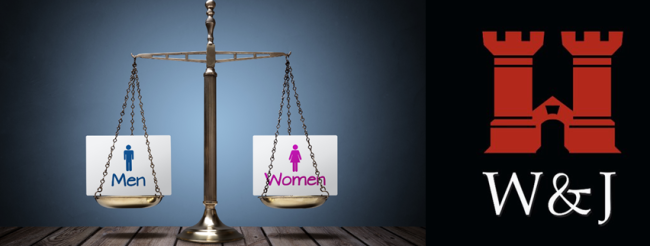You have /5 articles left.
Sign up for a free account or log in.

Brian Jackson / iStock
Women have become the majority of undergraduates, college graduates and students in many graduate and professional fields. While some students joke about favorable ratios for male students, many admissions officials worry that male potential applicants won't look seriously at institutions that are lopsidedly female in enrollments. The issue -- while now present throughout higher education -- has been of particular concern at liberal arts colleges, some of which have been open about favoring male applicants to try to keep the gender ratio closer to 50-50 than it would be otherwise. For most admissions leaders at liberal arts colleges, the challenge is getting more men.
So why is Washington & Jefferson College, with a roughly 50-50 split, worried about attracting more women?
Robert Gould, vice president for enrollment at the college, said the concern is in part about gaps that wouldn't be visible to students who see an evenly balanced campus. This year, in fact women are in the slight majority of new students, but that's a gap of about 10 students.
Gould said he is not sure why the college has been more successful than other liberal arts institutions in attracting men. One factor, he believes, is that the college is highly successful in Division III football -- not only athletically but in graduating those on the team. That's led to a steady stream of male applicants not duplicated among women. If the football team disappeared, Gould said, Washington & Jefferson would be more like other liberal arts colleges, with a solid female majority.
Graduation rates are similar for men and women, as are the most popular majors, so it's not like the college is attracting different kinds of male and female students, he said. Further, he said that the college does not use differential admissions standards in evaluating candidates. And inquiries from prospective students are roughly 50-50.
Where Washington & Jefferson sees a gap is in yield. The college ends up with its equal split by admitting roughly 300 more women then men, Gould said.
Typically the yield for admitted male applicants is 15 to 17 percent, he said. For female admitted applicants, the ratio is 10 to 13 percent.
While Washington & Jefferson is continuing to study why it loses more female admits than it does men, Gould said that it has decided on one strategy.
To date, the college's admissions materials in print and online have not had any gender focus -- the same message went out to all. The college is now preparing additional materials that will be used with women. The focus will be on alumnae who are successful in a range of professions, such as engineering, medicine, law and business. The idea will be to drive home with female potential students that women who attend the college go on to succeed in life.
If the plan works, male applicants need not fear that admissions standards will get more difficult.
Gould said that if the college can improve its female yield modestly, enrollment could well increase slightly. Currently the target class size is 400. He would like to see that grow to 430 though improved yields of women -- and said that the college has the capacity to handle such an increase, with no changes in admissions standards for men.
"We held our academic profile during these tumultuous recent years," he said. "But we never focused on targeting females." Doing so, he said, could help the college, and he has no fears about becoming typical in the liberal arts space of having a majority female class.








